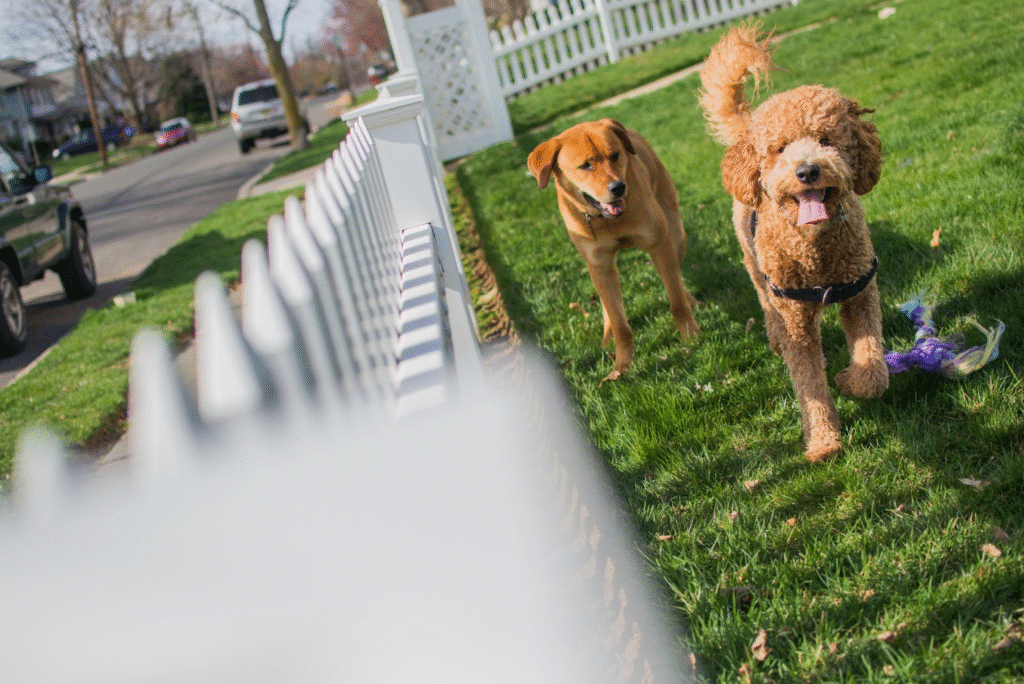
The Pacific Northwest is home to lush landscapes, breathtaking scenery—and plenty of curious critters. From deer and raccoons to coyotes and cougars, wildlife is an everyday reality for homeowners across Washington. If you have pets, that beautiful wilderness can also be a safety concern. A fence that’s not only secure but also thoughtfully designed is essential to keep your pets in—and keep wildlife out.
Whether you’re protecting a playful pup or a watchful cat, the right fencing solution can offer peace of mind and protection. That’s why so many pet owners are turning to safe fencing for pets that’s tailored to both the environment and the unique needs of their animals.
Understanding the Risk: Wildlife Meets Suburbia
Washington state’s urban development continues to expand into rural areas. This means increased encounters between pets and wildlife. Reports of coyotes snatching small pets in neighborhoods like Redmond, Sammamish, and Olympia are on the rise, especially in winter months when natural food sources are scarce.
Deer may not pose a threat to your pets, but they can attract predators. And smaller creatures—like skunks, opossums, or raccoons—may carry diseases or provoke defensive behavior in your pets, leading to injuries or vet bills.
Fence Design That Protects Pets and Wildlife
A pet-proof fence does more than act as a physical barrier. It should be strategically built to handle your pet’s behavior and local environmental conditions.
1. Height Matters
For most dogs, a 6-foot fence is enough. But if your dog is a jumper—or if you’re in coyote territory—consider adding coyote rollers or an angled extension to prevent climbing or leaping over.
2. Gap-Free Protection
Pets are clever escape artists. Gaps under fences can be exploited by diggers, while wide slats can let smaller pets squeeze through. A solid base or buried mesh (sometimes called a “dig barrier”) can help block both escape and intrusion.
3. Material Choice
- Wood: Offers privacy and durability, but make sure boards are close-set.
- Vinyl: Great for dogs that chew; it’s strong and smooth.
- Chain link with added panels: Economical and effective, especially when reinforced with privacy slats or animal-proof barriers.
- Metal or wrought iron: Stylish and secure, but best for larger pets unless gaps are covered.
Special Add-Ons for Pet-Proofing
- Coyote rollers: These rotating bars go on top of the fence and prevent animals from gaining a foothold.
- Underground mesh skirts: Deters digging under fences by extending the barrier below ground level.
- Pet windows: Clear acrylic panels or mesh “bubbles” let pets look out safely, reducing barking and territorial behavior.
Fence Placement & Local Wildlife Laws
Wildlife protection laws in Washington prohibit the trapping or harming of many native species. Your fence should never be designed to harm or ensnare animals. Instead, opt for ethical, non-lethal barriers that gently deter entry.
Placement is also key. Make sure your fence doesn’t block wildlife corridors or trap animals inside. It’s also a good idea to leave a clear line of sight around the outside perimeter so you can see any wildlife activity before it becomes a problem.
Work With Professionals Who Understand Local Needs
DIY fences may seem like a cost-saving solution, but they often fall short in durability and long-term safety. Improperly installed fences can sag, leave gaps, or use subpar materials that won’t stand up to curious pets or persistent wildlife. For a solution tailored to your yard, terrain, and pet behavior, it’s best to consult reliable fence installation experts who understand the demands of life in the Pacific Northwest.
Professionals can also advise on permits, neighborhood regulations, and long-term maintenance—saving you headaches down the road.
Final Thoughts: Peace of Mind for You and Your Pets
In a region rich with wildlife and natural beauty, homeowners must find a balance between enjoying the outdoors and keeping their loved ones safe. Pet-proof fencing isn’t just a smart investment—it’s a compassionate, effective way to protect both your animals and the native creatures who share the land.
When done right, it allows your pets to roam freely and safely while letting you breathe easier, knowing they’re protected from unwanted encounters.